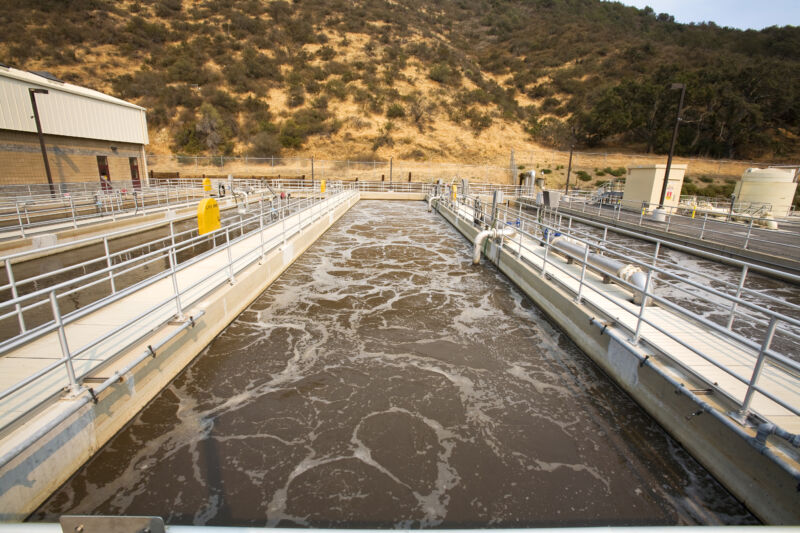
/ Aeration System, Hill Canyon Wastewater Treatment Plant, Camarillo, Ventura County, California.
The Centers for Disease Control and Prevention on Friday announced it is now publicly logging levels of SARS-CoV-2 found in sewage from around the country. The announcement elevates a growing system for wastewater surveillance that the CDC says will eventually be aimed at other infectious diseases.
The system began as a grassroots research effort in 2020 but has grown to a network of more than 400 wastewater sampling sites nationwide, representing the feces of approximately 53 million Americans. The CDC is now working with 37 states, four cities, and two territories to add more wastewater sampling sites. The health agency expects to have an additional 250 sites online in the coming weeks and more after that in the coming months.
In a press briefing Friday, Dr. Amy Kirby, the CDC’s program lead for the National Wastewater Surveillance System (NWSS), called the sampling a critical early warning system for COVID-19 surges and variants, as well as “a new frontier of infectious disease surveillance in the US.”
“Estimates suggest that between 40 and 80 percent of people with COVID-19 shed viral RNA [from SARS-CoV-2] in their feces, making wastewater and sewage an important opportunity for monitoring the spread of infection,” Kirby said. That shedding begins almost immediately during an infection, she added, before someone might begin showing symptoms and sometimes several days before a person might receive a positive test result. Moreover, those signals in the muck aren’t strained by the availability of tests or access to health care.
So far in the pandemic, sewage tracking in various places has flushed out early signs of variants and surges, sometimes foreshadowing a rise in cases days in advance. Overall, trends in RNA levels in sewage closely correlate with those of case rates, hospitalization rates, and test positivity, Kirby noted. And having that advanced warning can help health officials prepare for and prevent a surge. For instance, officials may be able to direct mobile testing to communities seeing early increases in RNA levels or bulk up hospital resources in areas expected to see rising cases.
“Those extra days can really make a difference in the ultimate trajectory of that surge in your community,” Kirby said.
Trends and plans
On the CDC’s new NWSS data-tracking site, people can see color-coded changes in RNA levels at various sewage monitoring sites. Sites colored blue, for instance, have seen a 100 percent drop in levels over the previous 15 days, while those in red have seen a 1,000 percent increase.
Wastewater surveillance is mostly useful for looking at trends like this—whether cases are headed up or down. It doesn’t clearly indicate how much SARS-CoV-2 is in a population at any given time, and researchers haven’t figured out the threshold for detection. That is, it’s unclear how many people in a particular sewage area have to be infected for a sewage sample to turn up positive.
But the surveillance has clearly proven effective at detecting coming surges—and variants. For instance, in a CDC study published late last month, Kirby and colleagues reported that several sewage-monitoring sites detected the omicron coronavirus variant before omicron cases were detected in individual states.
As SARS-CoV-2 moves from an acute pandemic phase to a calmer endemic phase, Kirby and her colleagues expect wastewater to help detect localized surges—perhaps seasonal ones—as well as the arrival of new variants. But, the sampling does have limitations. For one, it will miss a solid chunk of the US that uses septic systems—about 20 percent of US homes—rather than municipal sewers. In addition, deciphering surges can be more difficult in areas with transient populations, such as tourism hotspots.
Still, the sampling has proven useful enough to convince the CDC to invest in more wastewater surveillance. In addition to more sampling sites, Kirby said that the agency plans to expand surveillance this year to include other pathogens, including influenza, the drug-resistant fungus Candida auris, and foodborne threats like E. coli and norovirus.